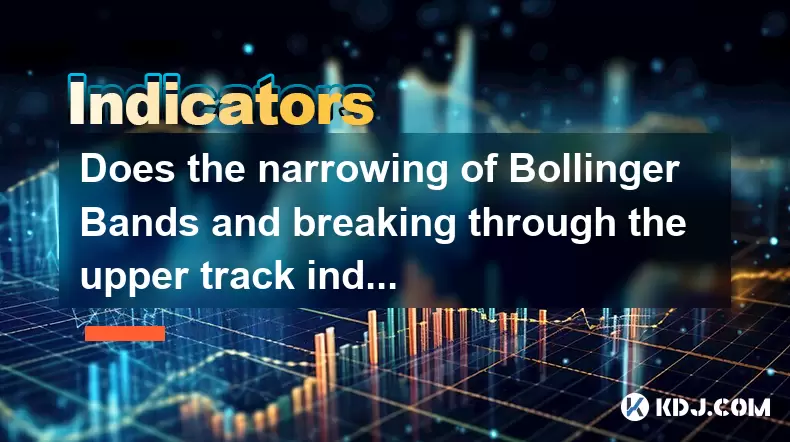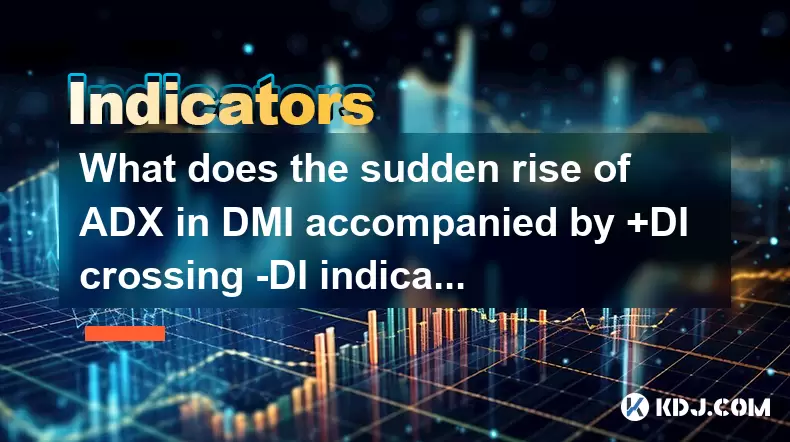-
 Bitcoin
Bitcoin $117400
1.93% -
 Ethereum
Ethereum $3747
3.63% -
 XRP
XRP $3.157
3.09% -
 Tether USDt
Tether USDt $1.000
0.02% -
 BNB
BNB $783.3
3.19% -
 Solana
Solana $186.6
5.64% -
 USDC
USDC $0.9999
0.01% -
 Dogecoin
Dogecoin $0.2375
5.42% -
 TRON
TRON $0.3185
1.32% -
 Cardano
Cardano $0.8191
3.28% -
 Hyperliquid
Hyperliquid $44.43
5.76% -
 Sui
Sui $3.995
9.84% -
 Stellar
Stellar $0.4396
6.27% -
 Chainlink
Chainlink $18.26
4.83% -
 Hedera
Hedera $0.2646
11.88% -
 Bitcoin Cash
Bitcoin Cash $553.5
5.55% -
 Avalanche
Avalanche $24.13
4.73% -
 Litecoin
Litecoin $113.3
1.77% -
 UNUS SED LEO
UNUS SED LEO $8.975
0.11% -
 Shiba Inu
Shiba Inu $0.00001405
5.69% -
 Toncoin
Toncoin $3.319
7.46% -
 Ethena USDe
Ethena USDe $1.001
0.02% -
 Uniswap
Uniswap $10.44
4.98% -
 Polkadot
Polkadot $4.098
4.31% -
 Monero
Monero $328.6
1.87% -
 Dai
Dai $1.000
0.01% -
 Bitget Token
Bitget Token $4.561
2.76% -
 Pepe
Pepe $0.00001261
5.29% -
 Aave
Aave $296.8
4.02% -
 Cronos
Cronos $0.1335
3.28%
Does the narrowing of Bollinger Bands and breaking through the upper track indicate a big rise?
A Bollinger Band squeeze followed by a high-volume breakout above the upper band can signal a strong upward move in crypto, as seen in past rallies of BTC and SOL.
Jul 25, 2025 at 07:36 pm

Understanding Bollinger Bands Structure
Bollinger Bands are a widely used technical analysis tool developed by John Bollinger. They consist of three lines: a simple moving average (SMA), typically set at 20 periods, and two outer bands that represent standard deviations above and below the SMA. The upper band is calculated by adding two standard deviations to the SMA, while the lower band subtracts two standard deviations. The distance between the upper and lower bands reflects market volatility. When volatility is high, the bands widen; when volatility is low, the bands contract. This dynamic behavior makes Bollinger Bands particularly useful in identifying potential breakout points in cryptocurrency price action.
What Does Band Narrowing Signify?
The narrowing of Bollinger Bands, often referred to as a "squeeze", indicates a period of low volatility. During this phase, price movements are compressed between the upper and lower bands, suggesting that the market is consolidating. In the context of cryptocurrency trading, such periods frequently precede significant price movements. The logic behind this is that extended low volatility cannot persist indefinitely—eventually, the market will experience a sharp move to reestablish volatility. Traders watch for this squeeze as a potential precursor to explosive price action, either upward or downward. The key is not just the squeeze itself, but the subsequent breakout direction that determines the trade setup.
Interpreting a Breakout Above the Upper Band
When price breaks through the upper Bollinger Band following a period of band contraction, it may signal the start of a strong upward move. This breakout indicates that buying pressure has overwhelmed recent resistance levels, pushing the price beyond its usual range. In crypto markets, which are highly sensitive to sentiment and news, such breakouts can be triggered by events like positive regulatory developments, exchange listings, or whale accumulation. However, not every breakout leads to a sustained rally. Some breakouts are false signals, especially if they lack volume confirmation. Therefore, it is essential to analyze additional indicators such as volume, RSI (Relative Strength Index), and MACD (Moving Average Convergence Divergence) to validate the strength of the move.
How to Confirm a Valid Breakout: Step-by-Step Guide
To determine whether a breakout above the upper Bollinger Band is likely to lead to a significant rise, traders should follow a structured confirmation process:
- Check if the volume has increased during the breakout. A surge in volume supports the legitimacy of the move, indicating strong participation from buyers.
- Monitor the closing price—a single candle piercing the upper band is less significant than multiple consecutive closes above it.
- Examine the RSI level. If RSI is above 70, the asset may be overbought, raising the possibility of a pullback despite the breakout.
- Look for confluence with other technical patterns, such as a bullish flag, ascending triangle, or a break of a key resistance level on the chart.
- Use higher timeframes (e.g., 4-hour or daily) to confirm the trend. A breakout on a 15-minute chart may be noise, while one on the daily chart carries more weight.
This multi-layered approach reduces the risk of acting on false signals and improves the probability of capturing genuine momentum moves.
Historical Examples in Cryptocurrency Markets
Several notable instances in the crypto market illustrate the power of a Bollinger Band squeeze followed by an upper band breakout. For example, in early 2023, Solana (SOL) experienced a prolonged period of consolidation where the Bollinger Bands tightened significantly over two weeks. Following this squeeze, SOL broke above the upper band on high volume, coinciding with renewed institutional interest and network upgrades. The price proceeded to rally over 60% in the subsequent month. Similarly, Bitcoin (BTC) demonstrated this pattern in late 2020 when the bands narrowed during a sideways phase, and the eventual breakout above the upper band marked the beginning of a major bull run. These cases show that while the pattern is not infallible, it can be a reliable signal when combined with fundamental catalysts and volume analysis.
Common Misinterpretations and Risks
Traders often misinterpret a simple touch of the upper band as a breakout, but this is not sufficient. A mere wick extending beyond the band without a strong close is typically a sign of overextension, not momentum. Another risk is entering a trade during a "bull trap", where price briefly breaks out but quickly reverses, trapping optimistic buyers. This scenario is common in low-liquidity altcoins, where large orders can artificially inflate price. Additionally, in ranging markets, prices often oscillate between the bands without initiating a trend, making it dangerous to assume every squeeze leads to a big move. Proper risk management, including the use of stop-loss orders and position sizing, is crucial when trading based on Bollinger Band signals.
Frequently Asked Questions
Can Bollinger Bands be used alone to predict price rises?
No, Bollinger Bands should not be used in isolation. While they provide insight into volatility and potential breakout points, they lack directional confirmation. Combining them with volume indicators, trend analysis, and momentum oscillators increases accuracy.
What timeframes are best for observing Bollinger Band squeezes in crypto?
The 4-hour and daily charts are most effective for identifying meaningful squeezes. Shorter timeframes like 5-minute or 15-minute charts generate too many false signals due to market noise.
Does a breakout above the upper band always lead to a continuation?
Not always. Some breakouts result in immediate reversals, especially if they occur on low volume or during low-liquidity periods. Confirmation through follow-through candles and supporting indicators is essential.
How do I adjust Bollinger Band settings for different cryptocurrencies?
The default 20-period SMA and 2-standard deviation settings work well for major coins like BTC and ETH. For more volatile altcoins, increasing the period to 25 or 30 may smooth the bands and reduce false signals.
Disclaimer:info@kdj.com
The information provided is not trading advice. kdj.com does not assume any responsibility for any investments made based on the information provided in this article. Cryptocurrencies are highly volatile and it is highly recommended that you invest with caution after thorough research!
If you believe that the content used on this website infringes your copyright, please contact us immediately (info@kdj.com) and we will delete it promptly.
- Wall Street's Bitcoin Bonanza: ETF Filings Signal Crypto's Coming-Out Party
- 2025-07-26 15:10:12
- Bitcoin, Cynthia Lummis, and Freedom Money: A New York Perspective
- 2025-07-26 15:10:12
- Bitcoin, Altcoin Season, and Market Shift: What's the Deal?
- 2025-07-26 14:30:12
- PEPE, Altcoins, and Bitcoin: Navigating the Meme Coin Mania in 2025
- 2025-07-26 14:30:12
- UAE's Digital Asset Revolution: Stablecoin Regulations Take Center Stage
- 2025-07-26 10:40:11
- Whale Transactions and ENA Token: Decoding the Withdrawal Dynamics
- 2025-07-26 14:50:12
Related knowledge

What does it mean that the rebound is blocked after the moving average is arranged in a short position for the first time?
Jul 26,2025 at 10:51am
Understanding the Short-Term Moving Average ConfigurationWhen traders refer to a 'short position arrangement' in moving averages, they are describing ...

What does it mean when the price rises along the 5-day moving average for five consecutive days?
Jul 26,2025 at 08:07am
Understanding the 5-Day Moving Average in Cryptocurrency TradingThe 5-day moving average (5DMA) is a widely used technical indicator in cryptocurrency...

What does it mean when the price breaks through the 60-day moving average with a large volume but shrinks the next day?
Jul 26,2025 at 06:01am
Understanding the 60-Day Moving Average in Cryptocurrency TradingThe 60-day moving average (60DMA) is a widely used technical indicator in the cryptoc...

What does the sudden rise of ADX in DMI accompanied by +DI crossing -DI indicate?
Jul 26,2025 at 01:21pm
Understanding the DMI and Its Core ComponentsThe Directional Movement Index (DMI) is a technical analysis tool used to determine the presence and stre...

What does it mean when OBV continues to hit new highs but the price is stagnant?
Jul 26,2025 at 09:57am
Understanding the On-Balance Volume (OBV) IndicatorThe On-Balance Volume (OBV) is a technical analysis indicator that uses volume flow to predict chan...

What does the golden cross of EMA12 and EMA26 but the low trading volume reflect?
Jul 26,2025 at 06:44am
Understanding the Golden Cross in EMA12 and EMA26The golden cross is a widely recognized technical indicator in the cryptocurrency market, signaling a...

What does it mean that the rebound is blocked after the moving average is arranged in a short position for the first time?
Jul 26,2025 at 10:51am
Understanding the Short-Term Moving Average ConfigurationWhen traders refer to a 'short position arrangement' in moving averages, they are describing ...

What does it mean when the price rises along the 5-day moving average for five consecutive days?
Jul 26,2025 at 08:07am
Understanding the 5-Day Moving Average in Cryptocurrency TradingThe 5-day moving average (5DMA) is a widely used technical indicator in cryptocurrency...

What does it mean when the price breaks through the 60-day moving average with a large volume but shrinks the next day?
Jul 26,2025 at 06:01am
Understanding the 60-Day Moving Average in Cryptocurrency TradingThe 60-day moving average (60DMA) is a widely used technical indicator in the cryptoc...

What does the sudden rise of ADX in DMI accompanied by +DI crossing -DI indicate?
Jul 26,2025 at 01:21pm
Understanding the DMI and Its Core ComponentsThe Directional Movement Index (DMI) is a technical analysis tool used to determine the presence and stre...

What does it mean when OBV continues to hit new highs but the price is stagnant?
Jul 26,2025 at 09:57am
Understanding the On-Balance Volume (OBV) IndicatorThe On-Balance Volume (OBV) is a technical analysis indicator that uses volume flow to predict chan...

What does the golden cross of EMA12 and EMA26 but the low trading volume reflect?
Jul 26,2025 at 06:44am
Understanding the Golden Cross in EMA12 and EMA26The golden cross is a widely recognized technical indicator in the cryptocurrency market, signaling a...
See all articles

























































































